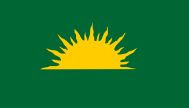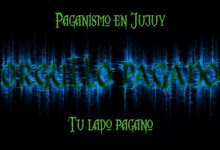Wednesday 14 January 2009
[Mythology] Eirik the Red's Saga
Eiríks saga rauða or the Saga of Erik the Red is a saga on the Norse exploration of North-America. In the saga, the events that led to Erik the Red's banishment to Greenland are chronicled, as well as Leif Ericson's discovery of Vinland the Good, after his longship was blown off course. By geographical details, this place is thought to be present-day Newfoundland, and is likely the first European discovery of the American mainland, some five centuries before Christopher Columbus's journey.
The saga is preserved in two manuscripts in somewhat different versions; Hauksbók (14th century) and Skálholtsbók (15th century). Modern philologists believe the Skálholtsbók version to be truer to the original. The original saga is thought to have been written in the 13th century.
[Mythology] The Egil's Skallagrimsson Saga
The Saga of Egil Skallagrímson, is a narrative literary work written in prose, whose protagonist is Scalding Egil. The Icelandic saga is one of the masterpieces of medieval Scandinavian narrative. It was written around 1230 by Snorri Sturluson. Argument Skallagrim is a Viking who lives in Norway and gets an enemy of King Harald of Norway due to the death of his brother Thorolf. For these and other reasons decide to seek refuge in Iceland. However, relations between the family and the king get worse, especially by the arrogance of his second son Egil. He is huge, dark and strong, and unlike his brother Thorolf Skallagrimson, Egil is not in favor or favorable to the king. It opposed his successor, Erik and an inheritance dispute with one of its jarls. The story goes even beyond the death of Egil Skallagrimson. |
[Philosophy] Nietzsche Complete Work
 "Nietzsche Complete Work VOL II" in PDF
"Nietzsche Complete Work VOL II" in PDF
The Complete Works of Friedrich Nietzsche
The First Complete and Authorised EnglishTranslation Edited
by DR. Oscar Levy
Ohio State University , 1913
Friedrich Nietzsche was a German philosopher of the late 19th century who challenged the foundations of traditional morality and Christianity. He believed in life, creativity, health, and the realities of the world we live in, rather than those situated in a world beyond. Central to Nietzsche's philosophy is the idea of "life-affirmation," which involves an honest questioning of all doctrines which drain life's energies, however socially prevalent those views might be.
Often referred to as one of the first "existentialist" philosophers, Nietzsche has inspired leading figures in all walks of cultural life, including dancers, poets, novelists, painters, psychologists, philosophers, sociologists and social revolutionaries.
[Ns Library] The Myth of the Twentieth Century
The myth for the twentieth century is, as Alfred Rosenberg, the myth of the blood. Displaying a broad knowledge, describes the parallels between distant civilizations chronologically, analyzing his psychology racial conceptions exteriorized in artistic, religious and philosophical.
[Ns Library] Mein Kampf

by Adolf Hitler
"MY STRUGGLE" ( "Mein Kampf") is a book of topical, and certainly one of the most sensational policy known in the Post-war. Is circulating around the world translated into eight languages and is a while since the German version has reached a figure of millions.
If even before 30 January 1933, when Hitler took over the government of the Reich, was considered a "Mein Kampf" as the Catechism of the Nazi movement in the long struggle to hold it to impose, now that Germany is saturated with the Hitlerian ideology, I would say that "Mein Kampf" is the Magna Carta for excellence in this powerful state, who in the heart of Europe, now governs the harmonious whole of the life of a great nation of 67 million inhabitants .
The autobiographical nature of the work that has increased its interest, outlining, through facts actually lived, the personality of the man who has devoted his fellow citizens with the unique name of the FÜHRER.
[Origin of the Celts] Theory V >>Origin in Mystic continent of Atlantis

The fact that Ireland, France and Spain, have a common factor in all the theories of the origin of the Celts, has created the most recent of all theories. Atlantis. This theory is based on the mystical continent of Atlantis which disappeared without any trace. Advocates of this theory are based more on assumptions that in presentations and physical evidence, of which only mentioned the fact that in Ireland, France and northern Spain, a mysterious congregation of Celts and Protocelts existed long before the Austria and Ukraine one, which makes them think that some mysterious inhabitants of a distant lost continent reached Europe. This theory is almost impossible to verify at least that someone founds the continent, however, is not entirely absurd and idiotic. Carlos Luisfondo in his book "We, The Celts, in the twentieth century." fully supports this theory saying that if they discovered the continent of Atlantis, it would soon make "A Monument" in a European museum. But for now it is virtually impossible to verify this theory.
Source: Celtic History(spanish)
[Origin of the Celts] Theory IV >> Irish Origin

The fourth theory is similar to the theory Galician-Asturian. According to the Irish Theory, the Celts were born in Ireland and the Isle of Man. From there, they began to migrate to England, Wales, Curnugales, Scotland, and then to France, the countries of Eastern Europe, Spain and Turkey (the Galatians). This theory is based on data found on the same date that Galician, except for a bowl with a decoration that is apparently being protocelt and is about 700 years before. The vessel, or rather, the fraction of the vessel is extremely damaged, and it is not well-known source. Some archaeologists presume that the vessel must not be protocelta, if not totally Celta, as far as we know, the first and almost the sole inhabitants of Ireland are Celts.
Another proof is the Celtic mythology although it can not be taken as a 'fundamental proof' for the simple fact of being 'Mythology', it says that before the world was born, the Celts inhabited Ireland. Claudio Portés in his book 'The Celtic Expansion in Europe' gives us an interpretation of this piece of mythology telling us that the Celts probably knew well that their origins were Irish, and relates to the fact that "Before Continental Europe had Celts, Ireland had. "
This theory, I think that might be the only one that could been verify or disprove in a short period of time, as the Celts in Ireland sources are broad and poorly handled.
Source: Celtic History(spanish)
[Origin of the Celts] Theory III >> Galician-Asturian Origin

The third theory is fairly new and unknown. New findings of data from nearly 3000 years before Hasllstat, of Protocelt peoples in La Coruna, in Ourense, and in the western end of the Principality of Asturias in northern Spain. Some authors suggest that the Celts had their birthplace in Spain and advanced to the Pyrenees, Catalonia and southern France, after that they emigrated to the East of Europe and the British Isles. For many years Celtic History in Spain was very poorly studied, and in recent years, which has been studied in depth in this town, have made significant discoveries.
This theory is very likely that a reality, as in Northern Ireland is the second largest (after Ireland) where the Celtic culture is pure, but it is very old and the new findings have supported this theory.
The Celtic origin, in Galicia and Asturias, has resulted in a clash between traditional historians or commonly called 'Desktop Historians and archaeologists', who have been the strongest advocates of this new theory.
Source: Celtic History(spanish)
[Origin of the Celts] Theory II >> German-Nordic Origin

The second theory on the origin of the Celtic nations is one that raises in the hypothesis that the Celts, and in general almost all European peoples, heir predecessors are not the original Indo-European peoples, but Scandinavian peoples or Vikings. This theory says that the Nordic arrived in Germany for various reasons, mainly by the simple desire for conquest, and from there they spread to Western Europe, Eastern Island and Middle East. Subsequently, the geographic isolation provoked Viking peoples who migrated to the south, became completely different from the Northern Vikings. But there is not much physical evidence to support this theory, since the Celtas remains found in Nordic countries are following the Celtic origin, apart from that, what was found in the course of Indo-European movements are much broader and more old. There is also little physical evidence that had been extremely manipulated by certain Governments during the Second World War and during the Cold War, it was in this period of history when much of the evidence was destroyed. The only strong evidence is the discovery of some materials clearly protocelts in northern Denmark, which were dated prior to the culture of Hallstat Austria. This theory is not accepted at present, but it is not wasted as the theory itself is very good and very logical.
Source: Celtic History(spanish)
[Origin of the Celts] Theory I >> Indo-European Origin

This theory proposed that a group of people from India and the Middle East, migrated towards Europe (an almost uninhabited continent). From this Indo-European people, or as some authors called them "the Aryan Nation", raised some of the greatest civilizations of Europe, like the Greeks, the Vikings, the Germanic, the Romans and clearly the Celts. These people may have emigrated to Europe due to internal problems, or with other nations, either by drought, habrunas or pests.
The Indo-Europeans arrived in the Urals and the Caspian Sea, crossed the Black Sea and arrived in Eastern Europe and the Balkans. Later, more were introduced in Europe and arrived in Germany, Austria, Switzerland and some Scandinavian countries boarded. This stage, which was the culture of Hallstat, they do have records, utensils, weapons, and some fossil mummified bodies found in Austria, which mark the start of the Celtic people.
Subsequently, the Celts moved to France, the British Isles, Ireland and Spain. The evidence of this theory are: Menhires, Dolmens and other traces of Celtic culture in Ukraine, the Balkans and above and in Austria, which are so far the oldest found in Europe.
Source: Celtic History(spanish)
Life is a Dream
This wild rage, this fierce condition
Of the mind, this proud ambition,
Should we ever dream again:
And we’ll do so, since ’tis plain,
In this world’s uncertain gleam,
That to live is but to dream:
Man dreams what he is, and wakes
Only when upon him breaks
Death’s mysterious morning beam.
The king dreams he is a king,
And in this delusive way
Lives and rules with sovereign sway;
All the cheers that round him ring,
Born of air, on air take wing.
And in ashes (mournful fate!)
Death dissolves his pride and state:
Who would wish a crown to take,
Seeing that he must awake
In the dream beyond death’s gate?
And the rich man dreams of gold,
Gilding cares it scarce conceals,
And the poor man dreams he feels
Want and misery and cold.
Dreams he too who rank would hold,
Dreams who bears toil’s rough-ribbed hands,
Dreams who wrong for wrong demands,
And in fine, throughout the earth,
All men dream, whate’er their birth,
And yet no one understands.
’Tis a dream that I in sadness
Here am bound, the scorn of fate;
’Twas a dream that once a state
I enjoyed of light and gladness.
What is life? ’Tis but a madness.
What is life? A thing that seems,
A mirage that falsely gleams,
Phantom joy, delusive rest,
Since is life a dream at best,
And even dreams themselves are dreams.













